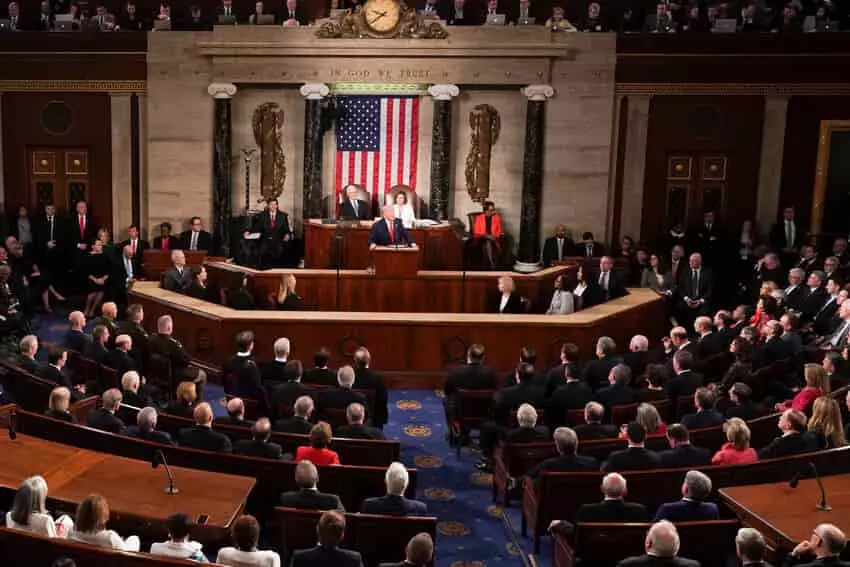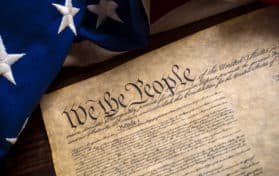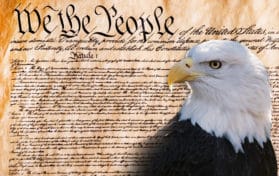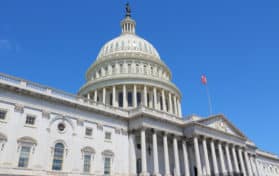
Each year, the President of the United States addresses the American people to deliver the SOTU, or the State of the Union Address. The speech is given on the floor of the United States Congress (typically in the House of Representatives). While COVID-19 has played a role in postponing the State of the Union address in the last two years, the president typically addresses the American people shortly after the beginning of the year.
The president is required to provide certain information to the public in this form under Article II, Section 3, Clause 1 of the Constitution. The president typically report to the American public as well as Congress on the economy and any issues regarding the nation’s budget; the president also shares any achievements and news regarding the country. Usually, the president will also lay out the upcoming legislative agenda and any proposals the president’s party is expected to present in the upcoming year.
The History of the State of the Union Address
The very first State of the Union speech was given by George Washington. He presented a speech that was seven pages in length to a joint session of Congress. This speech was given on January 8, 1790. This historic event took place in the original provisional capital of the United States, New York City.
However, just a little over a decade later, Thomas Jefferson decided to forgo giving the State of the Union speech personally. For years, the English monarch had given a Speech from the Throne, and Jefferson believed giving the SOTU address in person was a little too much like the British practice. So, beginning in 1801, the speech would be written and then sent to Congress. There, a clerk would read the prepared speech. This was the tradition until 1913.
President Woodrow Wilson was in office when he decided that the State of the Union address should return to the practice of in-person delivery, much like it had been when Washington was president. Of course, there was a bit of controversy around Wilson’s plan to deliver the speech in person, but, Wilson was able to persevere.
Since 1913, most of the State of the Union addresses have been presented in person. Occasionally, some presidents have given their address solely in writing without presenting the speech in person. Some State of the Union addresses have been presented via broadcast media. The last time that a president provided only a written address without a speech was in 1981, when Jimmy Carter had been defeated by Ronald Reagan in the 1980 presidential election. At the time, Carter was scheduled to leave office in just a few short days, so he did not make an in-person presentation of the speech.
This speech wasn’t always called the “State of the Union” address. Historically, the speech was called the President’s Annual Message to Congress, but, in 1934, Franklin D. Roosevelt referred to his upcoming speech as the “State of the Union,” and the description has stuck.
We Americans have become accustomed to the State of the Union speech taking place early in the calendar year. However, before 1934, the address was typically presented in December, at the end of the year. When the 20th Amendment was ratified on January 23, 1933, the amendment changed when Congress opened each year (from the original opening date of March to early January). Now, the State of the Union address is typically provided to the public in either January or February.
It is important to note that due to COVID-19, in the last two years, the State of the Union address has been a little later in the year. This year, the State of the Union address will be presented in March 2022.
The Twentieth Amendment also gave each presidential term an official start date of January 20. Typically, the incoming president is the one to deliver the State of the Union address each year. The last outgoing president to provide a SOTU address – although he did not present the speech in person – was Jimmy Carter. Since 1981, the outgoing president has not provided the SOTU address.
In 1953 and in 1961, both the outgoing president as well as the incoming president offered a speech that was shared as a part of the State of the Union address.
However, incoming presidents are not tasked with offering a State of the Union address as they have not officially begun their duties as the leader of the union. Therefore, incoming presidents will address the nation and/or Congress, but their speeches are not considered “State of the Union” speeches.
The very first State of the Union address ever to be broadcast on the radio was Warren G. Harding’s 1922 speech. Although it was broadcast on the radio, the audience was limited. The very next year, however, President Calvin Coolidge presented a State of the Union address that was broadcast on the radio for all Americans to hear.
In 1936, President Franklin D. Roosevelt’s address was the first one that had ever taken place during evening hours – other speeches took place during daytime or working hours. However, the very next year, the president went back to the practice of present the State of the Union during the daytime. It would be the 1960s before the State of the Union address was presented during evening hours once more.
In 1947, Harry Truman was the first president whose State of the Union address was broadcast on television. It was 1968 before television broadcasting networks allowed the speech to run its full course without imposing a time limit for the broadcast. This landmark speech was presented by President Lyndon B. Johnson, and it was the first State of the Union that was followed by political commentary. The first State of the Union address to be broadcast live via the internet was President Bill Clinton‘s 1997 State of the Union address.
The State of the Union has only been postponed a handful of times. The first time it was postponed was in 1986, the year that the Challenger space shuttle exploded. The 1986 State of the Union address had been scheduled for January 21, 1986, but, in the wake of the explosion, President Ronald Reagan decided to postpone the speech for a week. On the night of the scheduled State of the Union address, President Reagan spoke from the Oval Office regarding the horrific tragedy.
In 1999, President Bill Clinton made history as the first president to deliver a State of the Union address while at the same time under impeachment proceedings; however, Clinton made no mention of his legal troubles during the speech that night. President Clinton’s defense lawyers had made their opening statement that same day.
In 2019, animosity between President Donald Trump and Speaker of the House Nancy Pelosi became public when letters between the president’s office and the speaker’s office showed that she did not intend to proceed with a vote that would allow him to deliver the State of the Union speech – unless he ended the government shutdown that was in effect at the time. This was the first documented time that a sitting president had been “disinvited” from presenting the address. The speech was eventually presented on February 5, 2019.
Traditions Around Delivery of the Speech
In order to set the day and time of the State of the Union, both chambers of Congress must pass a resolution that will set the date and time of the presentation. Once this day and time is set, the Speaker of the House will then send a formal invitation to the president alerting him of the appointment. This typically takes place several weeks in advance.
Every member of Congress is allowed to invite guests to the State of the Union speech. For each member, he or she may invite one person. The president, however, may invite up to twenty-four people who will be seated with the First Lady in her box. The Speaker of the House is also afforded twenty-four invitations for members of the public, and they will be seated in the Speaker’s box. Members of Congress may sit on the main floor, but there are no reserved seats for members of Congress, and they fill in seats on a first-come, first-served basis.
Those who do have reserved seats include the Supreme Court Justices, members of the president’s Cabinet, the Joint Chiefs of Staff (military), and American diplomats.
On the night of the speech, at approximately 8:30 PM, the Deputy Sergeant at Arms will announce that the members of the Senate and the Vice President are about to enter and all begin to take their seats. The Speaker of the House then announces what members of Congress will be escorting the president into the chamber. The Deputy Sergeant then announces the individual names of those in reserved seating, and they enter and take their seats. Shortly after 9 PM, the president approaches the doors, and the Sergeant at Arms will announce: “Madam (or Mister) Speaker of the House, the president of the United States!” As the president walks in, he typically shakes hands and greets various individuals present. The president will then present two manila envelopes to the Speaker of the House and the Vice President, and he will then begin his speech.
One of the most important traditions of the SOTU address is a designated survivor. If there is a major catastrophe, there is one cabinet member who will not attend the SOTU speech. Additionally, some members of Congress have been asked to spend the evening of the SOTU in an undisclosed location for the same reason.





